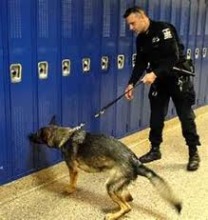
In maintaining public safety in the nation’s airports, officials inevitably send in the dogs. Even in this age of technology, aviation officials believe a dog’s nose remains the best machine for detecting suspicious material. Hounds trained to sniff explosives and other hazardous substances accurately identify even microscopic residue on passengers’ clothing, bags and skin. With a dog’s heightened and exacting sense of smell and great mobility, the animal can quickly hone in on the area where a specified odor is coming from, a task impossible for a machine.

By adding canine teams across the nation’s airports, the Federal Aviation Administration (FAA) is further stepping up its efforts in keeping passengers safe in the skies. Last year, there were 188 canine teams working full-time at 39 major airports across the country, and the FAA intends to add teams to 25 more airports this year and to 16 more in 2003, according to their spokesman Paul Takemoto. Additionally, the September 11 attacks prompted the FAA to require highly accurate bomb detecting machines at all large U.S. airports by the end of this year.
The use of dogs as bomb-detection devices in the airports began dramatically on March 9, 1972. After receiving an anonymous phone call regarding a bomb on a TWA airliner bound for Los Angeles from New York, the plane was instructed to return to New York and evacuate. Immediately, New York Port Authority Police brought in a bomb-sniffing German shepherd named Brandy to search the airplane. Brandy sniffed out the bomb 12 minutes before it was set to explode.
President Richard Nixon then instructed the FAA to employ ‘innovative means’ to better ensure passengers’ safety, and defend against such dangers in the future. As a result, the FAA created its Explosives Detection Canine Team Program. The 1-2 year old dogs and their police officer handlers enrolled in this program receive intensive training outside of San Antonio, Texas at the Defense Department’s Military Working Dog School before they are deployed to their assignments.
The dogs are not infallible though, as they suffer fatigue, need specialized training and require a skilled handler. However, when working in concert with detection machines, the two air safety mechanisms put up a comprehensive front against potential situations in the sky.
